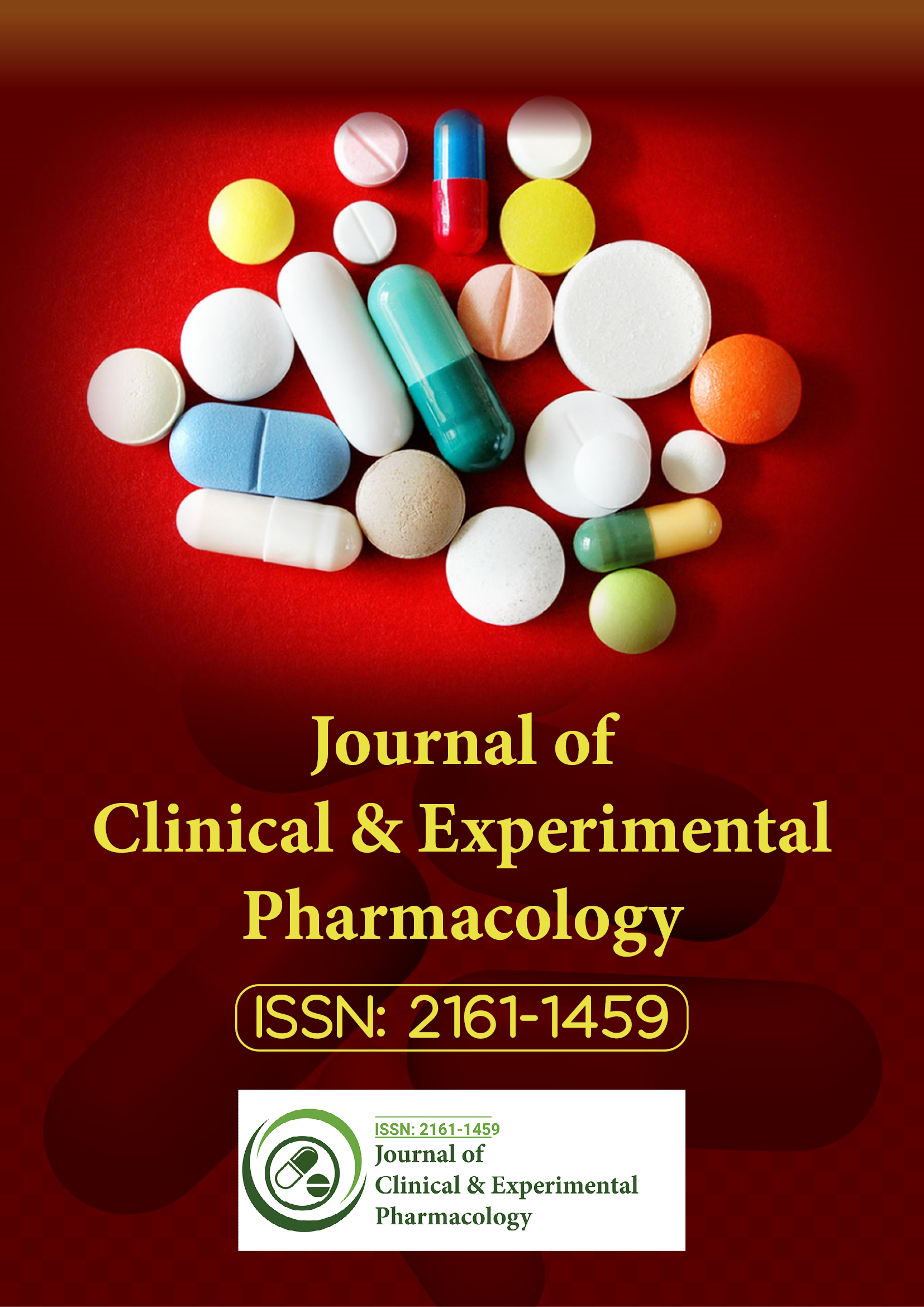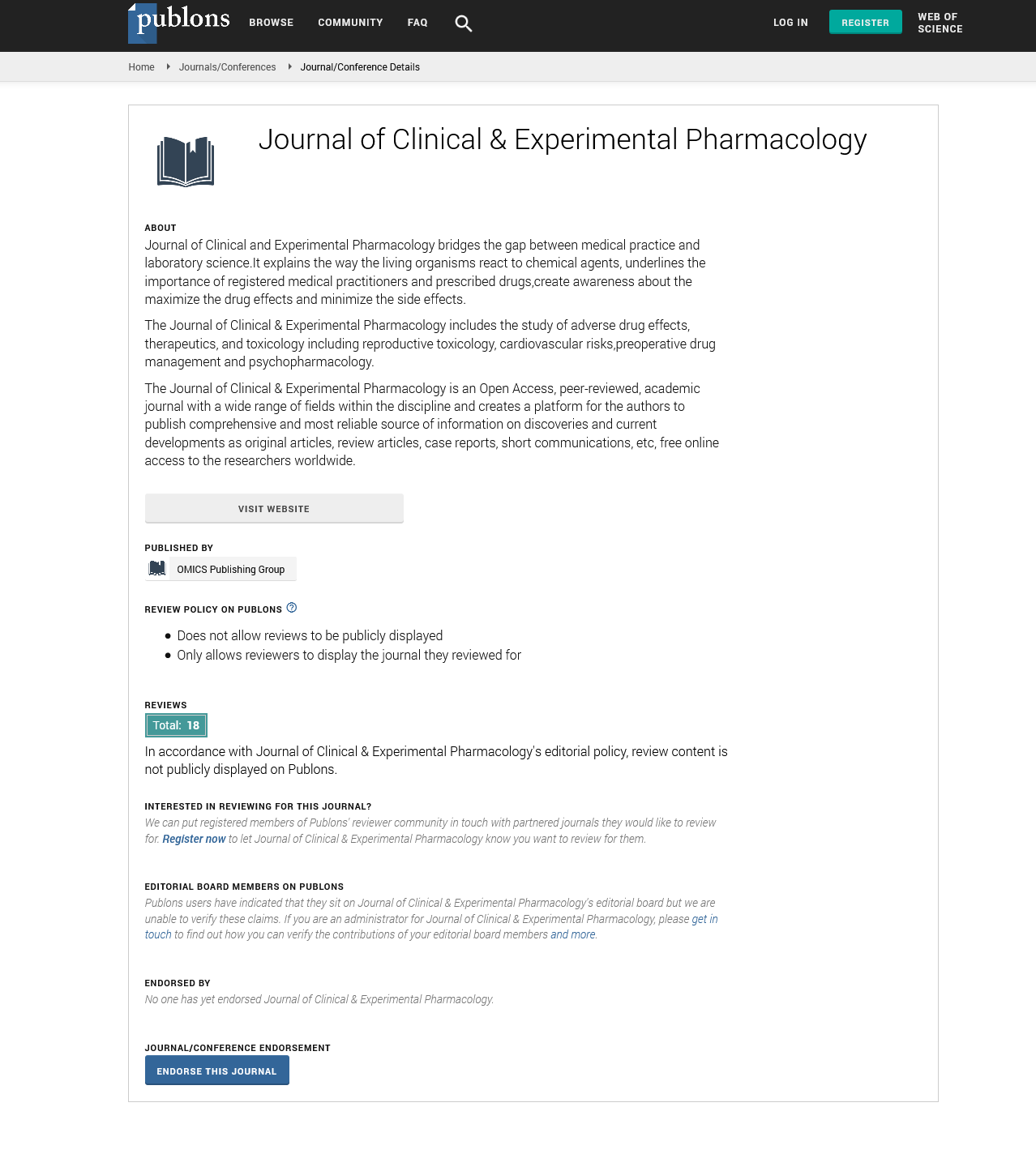Indexed In
- Open J Gate
- Genamics JournalSeek
- China National Knowledge Infrastructure (CNKI)
- Ulrich's Periodicals Directory
- RefSeek
- Hamdard University
- EBSCO A-Z
- OCLC- WorldCat
- Publons
- Google Scholar
Useful Links
Share This Page
Journal Flyer

Open Access Journals
- Agri and Aquaculture
- Biochemistry
- Bioinformatics & Systems Biology
- Business & Management
- Chemistry
- Clinical Sciences
- Engineering
- Food & Nutrition
- General Science
- Genetics & Molecular Biology
- Immunology & Microbiology
- Medical Sciences
- Neuroscience & Psychology
- Nursing & Health Care
- Pharmaceutical Sciences
Opinion Article - (2025) Volume 15, Issue 3
Pharmacological Considerations of Drug Interactions in Patients on Multiple Medications
Luke Wilson*Received: 06-Jun-2025, Manuscript No. CPECR-25-29370; Editor assigned: 09-Jun-2025, Pre QC No. CPECR-25-29370 (PQ); Reviewed: 23-Jun-2025, QC No. CPECR-25-29370; Revised: 30-Jun-2025, Manuscript No. CPECR-25-29370 (R); Published: 07-Jul-2025, DOI: 10.35248/2161-1459.25.15.486
Description
Polypharmacy, commonly defined as the concurrent use of five or more medications, has become increasingly prevalent, particularly among older adults and individuals with chronic conditions. While necessary for managing multiple diseases, polypharmacy significantly increases the likelihood of Drug-Drug Interactions (DDIs), which may lead to reduced therapeutic effects, unexpected adverse events, or toxicity. Understanding the mechanisms, risk factors and clinical implications of DDIs is essential for ensuring patient safety and effective treatment outcomes.
Drug-drug interactions occur when the pharmacological or pharmacokinetic properties of one drug are altered by the presence of another. These interactions may be classified as pharmacodynamic, where drugs influence each other’s effects at their site of action, or pharmacokinetic, where one drug alters the absorption, distribution, metabolism, or excretion of another. Pharmacodynamic interactions may be additive, synergistic, or antagonistic in nature. For example, combining two central nervous system depressants, such as benzodiazepines and opioids, can result in enhanced sedation and respiratory depression. On the other hand, the concurrent use of a beta-blocker and a beta-agonist may result in diminished efficacy of both agents due to opposing effects.
Pharmacokinetic interactions are more complex and often involve enzyme systems responsible for drug metabolism, particularly the Cytochrome P450 (CYP450) family. Drugs that inhibit or induce these enzymes can significantly alter the plasma concentration of other medications. For instance, co-administration of a CYP3A4 inhibitor such as ketoconazole with a drug extensively metabolized by CYP3A4, like simvastatin, can lead to elevated statin levels and an increased risk of muscle toxicity. Conversely, enzyme inducers such as rifampin can lower the plasma concentration of co-administered drugs, reducing their effectiveness.
Beyond metabolism, interactions can also affect drug transport proteins like P-glycoprotein, which plays a role in drug absorption and excretion. Inhibition of P-glycoprotein can increase bioavailability and tissue penetration of drugs, potentially resulting in adverse effects. Other factors influencing DDIs include alterations in gastric pH, changes in gastrointestinal motility and competition for protein-binding sites in plasma, which can shift the free (active) fraction of a drug.
Patients at greatest risk for DDIs include the elderly, individuals with multiple chronic illnesses, those with impaired liver or kidney function and individuals taking narrow therapeutic index drugs such as warfarin, digoxin and lithium. The risk is compounded when patients see multiple healthcare providers, fill prescriptions from different pharmacies, or use over-the-counter products and herbal supplements without informing their physicians. Herbal products such as St. John’s Wort can induce metabolic enzymes, affecting the levels of antidepressants, immunosuppressants and anticoagulants.
Clinicians must remain vigilant in identifying potential DDIs, particularly in settings where polypharmacy is unavoidable. Medication reconciliation during transitions of care is an essential practice for uncovering unintentional drug duplication and potential interactions. Clinical decision support systems integrated into electronic prescribing platforms offer real-time alerts for known interactions, helping providers assess risk before finalizing prescriptions. However, overreliance on automated alerts can result in alert fatigue, leading to dismissal of important warnings.
Risk minimization strategies include reviewing the entire medication regimen regularly, considering non-pharmacologic alternatives when appropriate, starting new medications at the lowest effective dose and monitoring for clinical signs of interaction-related toxicity or therapeutic failure. Therapeutic drug monitoring is particularly useful for medications with a narrow therapeutic index, allowing dosage adjustments based on serum concentrations.
The role of pharmacists in identifying and managing DDIs has become increasingly important. Pharmacists are trained to recognize interaction patterns, review complex regimens and provide counseling on timing and administration to minimize risk. Interprofessional collaboration between pharmacists, physicians and nurses ensures that medication management is a shared responsibility focused on patient safety.
Education also plays a central role in preventing DDIs. Patients should be informed about potential interaction risks and encouraged to maintain a complete list of medications, including supplements and non-prescription drugs. Encouraging open communication about all substances being used helps clinicians provide safer and more effective care. Additionally, advancements in pharmacogenetics are enabling more precise predictions of drug metabolism based on an individual’s genetic makeup, which can help anticipate interactions and guide personalized therapy.
In research and drug development, DDIs are evaluated through in vitro studies, animal models and clinical trials prior to regulatory approval. Labeling requirements mandate that known interactions and precautions are clearly described in product information. Post-marketing surveillance continues to capture emerging evidence of interactions that may not have been evident during initial testing. National and international drug safety databases serve as repositories of real-world data, supporting continuous learning and updating of guidelines.
In conclusion, drug-drug interactions remain a significant concern in the context of polypharmacy, particularly among vulnerable populations. These interactions can compromise the effectiveness of treatment and expose patients to unnecessary harm. Understanding the mechanisms of DDIs, recognizing high-risk scenarios and implementing proactive strategies are key components of safe pharmacologic management. Through careful medication review, use of decision support tools, interprofessional collaboration and patient education, the risks associated with polypharmacy and drug interactions can be effectively mitigated. As healthcare systems increasingly emphasize personalized and coordinated care, attention to DDIs will remain an essential aspect of clinical pharmacology.
Citation: Wilson L (2025). Pharmacological Considerations of Drug Interactions in Patients on Multiple Medications. J Clin Exp Pharmacol. 15:486.
Copyright: © 2025 Wilson L. This is an open-access article distributed under the terms of the Creative Commons Attribution License, which permits unrestricted use, distribution and reproduction in any medium, provided the original author and source are credited.

